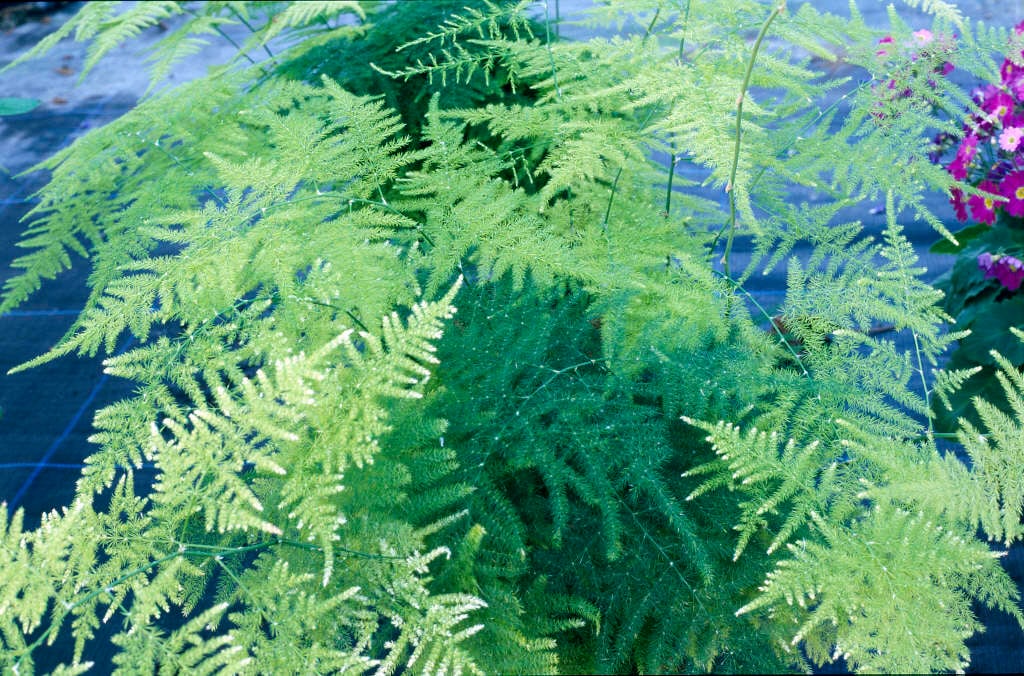Asparagus setaceus
fern asparagus
A bushy tuberous perennial developing twining stems to 2.5m tall, with fine feathery bright green foliage, small white flowers and deep purple berries
Synonyms
Asparagus plumosusSize
Ultimate height
1.5–2.5 metresTime to ultimate height
2–5 yearsUltimate spread
0.1–0.5 metresGrowing conditions
Moisture
Moist but well–drained, Well–drainedpH
Acid, Alkaline, NeutralColour & scent
| Stem | Flower | Foliage | Fruit | |
| Spring | Green | |||
|---|---|---|---|---|
| Summer | White | Green | ||
| Autumn | Green | Purple | ||
| Winter | Green |
Position
- Partial shade
Aspect
West–facing or South–facing
Exposure
Sheltered Hardiness
H2Botanical details
- Family
- Asparagaceae
- Native to GB / Ireland
- No
- Foliage
- Evergreen
- Habit
- Climbing
- Potentially harmful
- Skin allergen, fruits harmful if eaten. Wear gloves and other protective equipment when handling
- Genus
Asparagus can be evergreen or deciduous perennials or subshrubs, sometimes climbing, with tuberous rootstock. Stems bear both inconspicuous scale-like leaves and larger, leaf-like phylloclades, with small white or pinkish flowers followed by red berries
- Name status
Correct
- Plant range
- South and East Africa
How to grow
Cultivation
Under glass grow in peat-free, loam-based potting compost in bright filtered light sheltered from hot sun. Keep frost free. Water freely from spring to mid-autumn; water more sparingly in winter. Pot on in spring. Provide support
Propagation
Propagate by seed in autumn or early spring, germinate at 16°C (61°F). Divide in early spring
Suggested planting locations and garden types
- Patio and container plants
- Architectural
Pruning
No pruning required
Pests
May be susceptible to asparagus beetle, slugs and snails
Diseases
Generally disease-free
Get involved
The Royal Horticultural Society is the UK’s leading gardening charity. We aim to enrich everyone’s life through plants, and make the UK a greener and more beautiful place.
